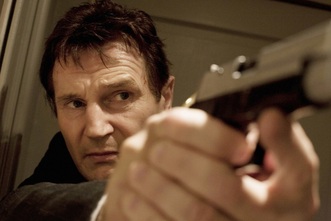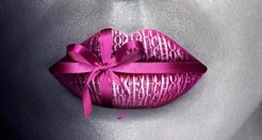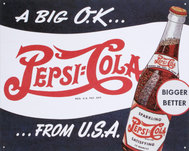
For the first time, a team of medical and economic researchers used Magnetic Resonance Imaging (MRI) to determine biologically the impact of brands on the human brain. This brainstorm in brain branding known as neuroeconomics was reported by the Wall Street Journal, usually more concerned with economics than neuro. And while the findings may only prove what Grok probably knew instinctively 10,000 years ago in a cave, when he held up a rock and said: “Grok’s rocks. Last longer,” that won’t stop me from reporting this amazing scientific corroboration of the obvious.
The researchers took the brains of twenty highly-educated people and studied the impact of strong brands and weak brands in both high interest and low interest categories: cars and insurance. The MRI was fitted with a video monitor (they’re everywhere these days, aren’t they?), logos were flashed, and brain activity measured.
The result? When strong brand Volkswagen was flashed, a strong pattern of activity was noted in the part of the brain associated with positive emotions, self-identification and rewards. When an unknown car marque flashed, activity was churned up in parts of the brain associated with negative emotions and memory, suggesting the brain had to work for a response.
The surprise came with the low interest category of insurance. A strong brand, European insurerAllianz, produced as powerful a reaction in the brain as Volkswagen. And a weaker brand,Volksfursorge, evoked the same dreary response as the unknown car.
The lesson is irrefutable: a strong brand is a neurological powerhouse operating independent of the product itself. People clearly care more about status symbols like cars and fashion than they do about abstractions like insurance. Yet a strong brand in either category evokes an identical explosion in the nervous system.
So while it’s no surprise your heart beats faster in an Apple store or Ferrari showroom, when you put on a pair of Prada eyeglasses, stroll through Victoria’s Secret, or drink a Coke (which I don’t), apparently the same electricity fires up somewhere in your nervous system when you sign up for Geico insurance (but not Nationwide) or slip into Calvin Klein underwear. (Speaking of which, Calvin Klein’s daughter once said: “Why is it that every time I have sex, I have to read my father’s name.” But I digress).
Interestingly, throughout this exercise in logo-flashing and brain measuring, the decision-making part of the brain was curiously absent. Implying a brand is some evolutionary and neurological shorthand, allowing people to act spontaneously and instantly without having to figure things out.
In advertising, we struggle every day to reach the hearts and minds of consumers. Maybe we should be turning our attention to the synaptic vesicles.
The researchers took the brains of twenty highly-educated people and studied the impact of strong brands and weak brands in both high interest and low interest categories: cars and insurance. The MRI was fitted with a video monitor (they’re everywhere these days, aren’t they?), logos were flashed, and brain activity measured.
The result? When strong brand Volkswagen was flashed, a strong pattern of activity was noted in the part of the brain associated with positive emotions, self-identification and rewards. When an unknown car marque flashed, activity was churned up in parts of the brain associated with negative emotions and memory, suggesting the brain had to work for a response.
The surprise came with the low interest category of insurance. A strong brand, European insurerAllianz, produced as powerful a reaction in the brain as Volkswagen. And a weaker brand,Volksfursorge, evoked the same dreary response as the unknown car.
The lesson is irrefutable: a strong brand is a neurological powerhouse operating independent of the product itself. People clearly care more about status symbols like cars and fashion than they do about abstractions like insurance. Yet a strong brand in either category evokes an identical explosion in the nervous system.
So while it’s no surprise your heart beats faster in an Apple store or Ferrari showroom, when you put on a pair of Prada eyeglasses, stroll through Victoria’s Secret, or drink a Coke (which I don’t), apparently the same electricity fires up somewhere in your nervous system when you sign up for Geico insurance (but not Nationwide) or slip into Calvin Klein underwear. (Speaking of which, Calvin Klein’s daughter once said: “Why is it that every time I have sex, I have to read my father’s name.” But I digress).
Interestingly, throughout this exercise in logo-flashing and brain measuring, the decision-making part of the brain was curiously absent. Implying a brand is some evolutionary and neurological shorthand, allowing people to act spontaneously and instantly without having to figure things out.
In advertising, we struggle every day to reach the hearts and minds of consumers. Maybe we should be turning our attention to the synaptic vesicles.




 RSS Feed
RSS Feed